Ever felt overwhelmed by the sheer number of research methods out there?
Whether you’re crunching numbers or exploring human experiences, choosing the right method can make or break your research. But don’t worry, this newsletter breaks it all down for you.
1. What is a Research Method?
Before diving into specific methods, let’s clarify what a research method is.
A research method is the strategy or technique you use to collect, analyze, and interpret data in your research. It provides a systematic way of answering your research questions and ensures your findings are reliable and valid.
Research methodology isn’t about the methods you use—it’s a broader framework that outlines how your research is conducted. It includes several key components.
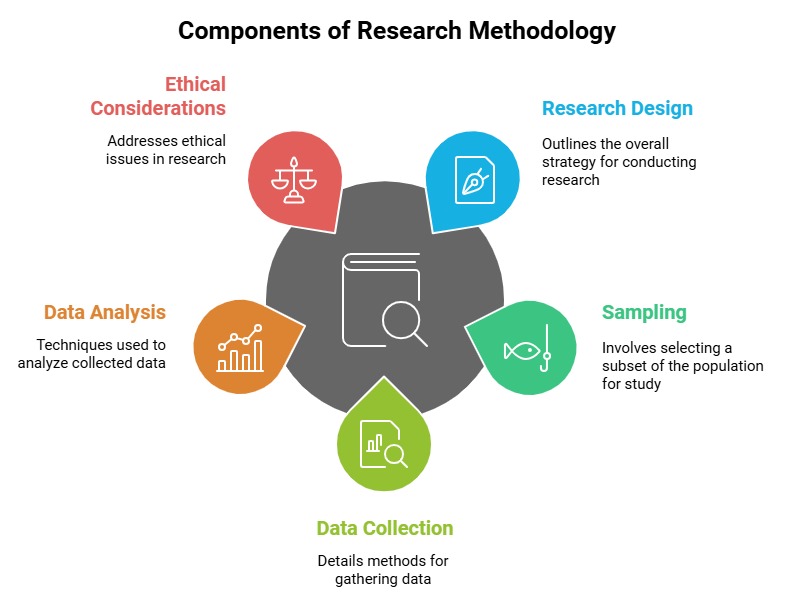
1. Research Design: The overall strategy that defines how you’ll answer your research question (e.g., experimental, observational, or descriptive design).
2. Data Collection Methods: The tools and techniques you’ll use to gather data (e.g., surveys, interviews, experiments).
3. Sampling Strategy: How you’ll select your subjects or data sources (e.g., random sampling, purposive sampling).
4. Data Analysis Techniques: The approaches you’ll use to analyze and interpret your data (e.g., statistical tests, thematic analysis).
5. Ethical Considerations: Guidelines to ensure your research adheres to ethical standards (e.g., informed consent, confidentiality).
By clearly defining these components in your research plan, you ensure your study is rigorous, transparent, and replicable.
2. Types of Research Methods
Research methods fall into two main categories:
• Quantitative Methods: Focused on numerical data, patterns, and statistical analysis.
• Qualitative Methods: Focused on understanding experiences, behaviors, and meanings.
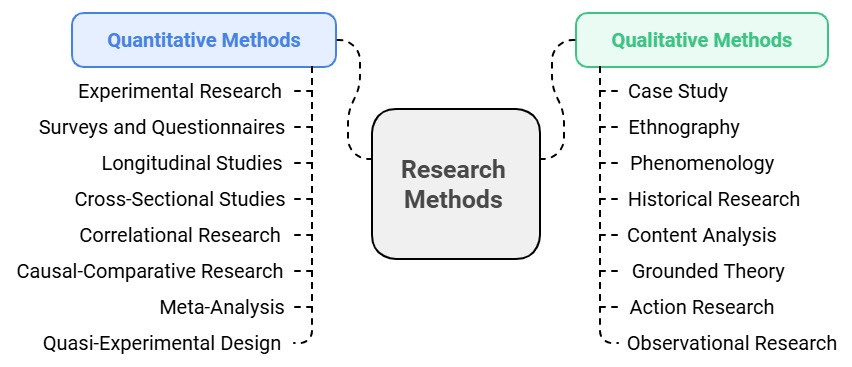
The method you choose depends on your research goals, questions, and the type of data you need to collect.
3. Quantitative Research Methods
Quantitative methods focus on numbers, statistics, and measurable outcomes. They’re ideal for studying patterns, testing hypotheses, and finding relationships between variables.
There is this amazing tool that can help you in quantitative data analysis.
It’s called Julius AI.
It will analyze your data in 10 seconds.
This tool is used by more than 500,000 researchers.
𝐖𝐡𝐚𝐭 𝐜𝐚𝐧 𝐲𝐨𝐮 𝐝𝐨 𝐰𝐢𝐭𝐡 𝐉𝐮𝐥𝐢𝐮𝐬 𝐀𝐈?
➟ Draw all kinds of graphs based on your data
➟ Clean your data and run significance test
➟ Explore trends and relationships in your data
➟ Convert tables in PDF to excel format for analysis
| Check it out here: www.julius.ai |
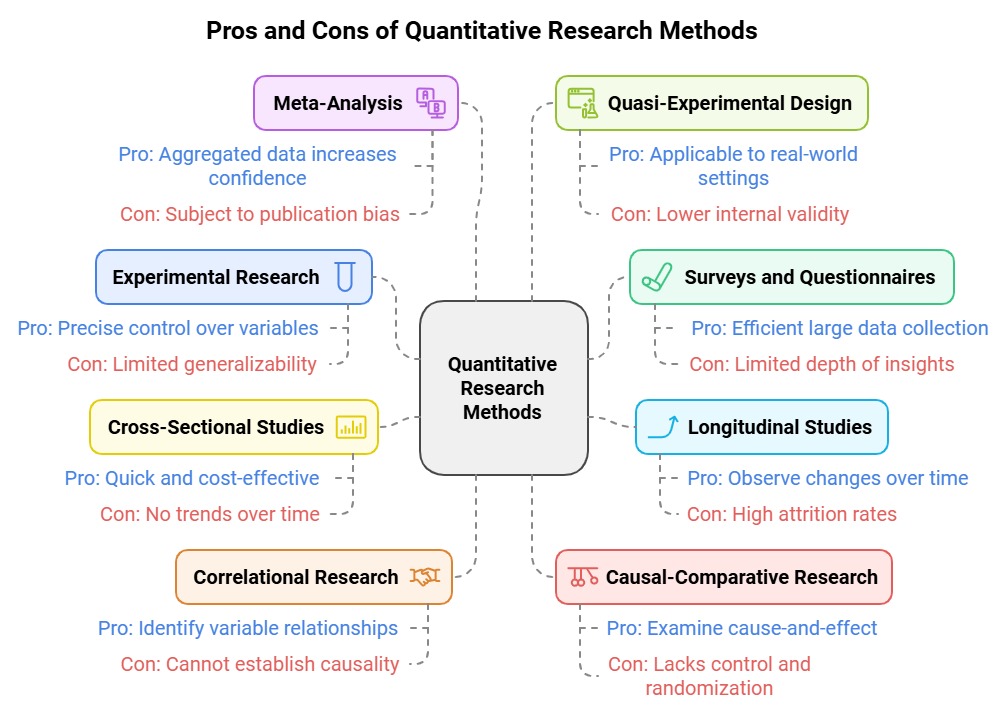
1. Experimental Research: Manipulates variables to determine cause and effect.
Example: Testing whether a new teaching method improves student performance by comparing two groups under controlled conditions.
2. Surveys and Questionnaires: Collects structured data from a large number of respondents.
Example: Conducting a survey to measure public opinion on climate change policies.
3. Longitudinal Studies: Observes the same subjects over a period of time to detect changes.
Example: Tracking the progress of students in a specific curriculum over five years.
4. Cross-Sectional Studies: Analyzes data at a specific point in time.
Example: Measuring stress levels among healthcare workers during a pandemic.
5. Correlational Research: Investigates the relationship between two or more variables without manipulating them.
Example: Exploring the link between screen time and sleep quality.
6. Causal-Comparative Research: Compares two groups to identify causes or effects.
Example: Comparing the productivity of remote workers vs. in-office workers.
7. Meta-Analysis: Combines results from multiple studies to identify trends.
Example: Analyzing 20 studies on the effectiveness of mindfulness for reducing anxiety.
8. Quasi-Experimental Design: Similar to experimental research but without random group assignment.
Example: Evaluating the effectiveness of a training program implemented across different departments.
4. Qualitative Research Methods
Qualitative methods focus on understanding experiences, behaviors, and social phenomena. They often involve rich, descriptive data collected through interviews, observations, or textual analysis.
There is this amazing tool that can help you in qualitative data analysis.
The tool is called MyRA
It will analyze your qualitative data in seconds.
𝐖𝐡𝐚𝐭 𝐜𝐚𝐧 𝐲𝐨𝐮 𝐝𝐨 𝐰𝐢𝐭𝐡 𝐭𝐡𝐢𝐬 𝐭𝐨𝐨𝐥?
➟ Organize and categorize your qualitative data
➟ Identify patterns and themes in your data
➟ Code, tag, and visualize your qualitative data
| Check it out here: www.myraresearch.com |
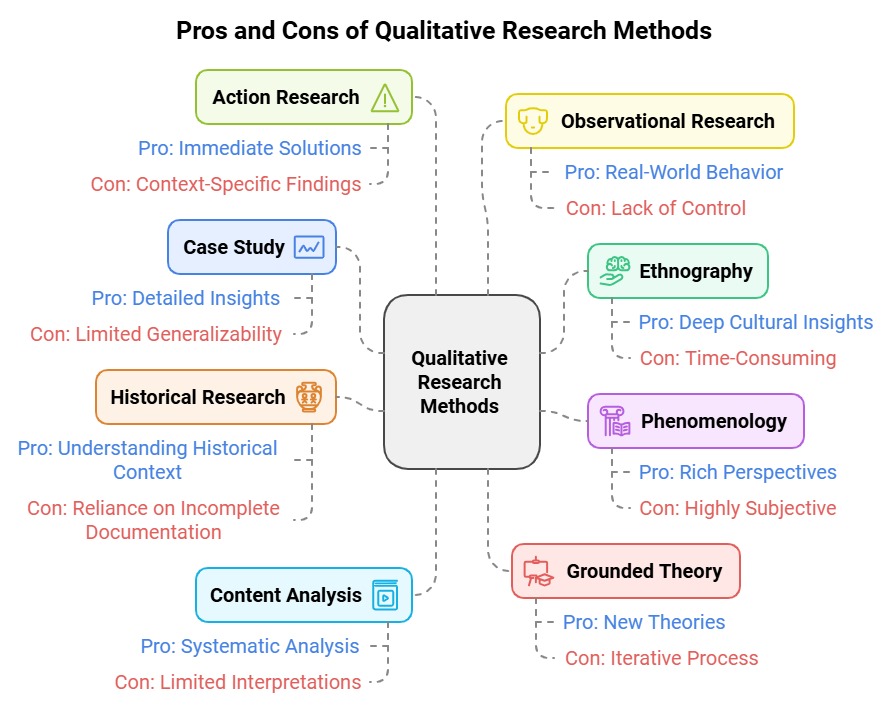
9. Case Study: In-depth exploration of a single subject or group.
Example: Analyzing how a tech startup navigated rapid growth.
10. Ethnography: Studies cultural groups in their natural environment.
Example: Observing how a rural community adapts to technological changes.
11. Phenomenology: Focuses on individuals’ lived experiences.
Example: Exploring how patients experience long-term care for chronic illnesses.
12. Historical Research: Examines past events to draw conclusions and predict future trends.
Example: Analyzing historical data on economic recessions to identify patterns.
13. Content Analysis: Systematically analyzes communication content for patterns and meaning.
Example: Studying how climate change is portrayed in news articles.
14. Grounded Theory: Develops a theory based on field observations.
Example: Observing teamwork dynamics in hospitals to create a new framework for collaboration.
15. Action Research: Involves collaborative, iterative problem-solving in real-world contexts.
Example: Partnering with teachers to improve classroom engagement strategies.
16. Observational Research: Observes subjects in their natural environment without interference.
Example: Watching how shoppers interact with product displays in a store.
5. How to Choose the Right Method?
Choosing the right method depends on your research question and goals. Reflect on these:
➝ Use Quantitative Methods if you need measurable data or want to test hypotheses.
➝ Use Qualitative Methods if you’re exploring behaviors, experiences, or social phenomena.
➝ Combine Both if you need both numerical data and rich, descriptive insights for a comprehensive approach.
Final Thoughts
Choosing the right research method is like picking the perfect tool for a job—it saves you time, effort, and ensures the success of your project.
Please share your thoughts related to this article in the comments.

Things you don’t want to miss!
1. Missed my new video, “10 Simple Ways to 10x Your PhD Productivity?” Don’t worry—you can watch the full session on my YouTube channel! Click here to dive into practical tips that will help you work smarter, stay focused, and make progress like never before.


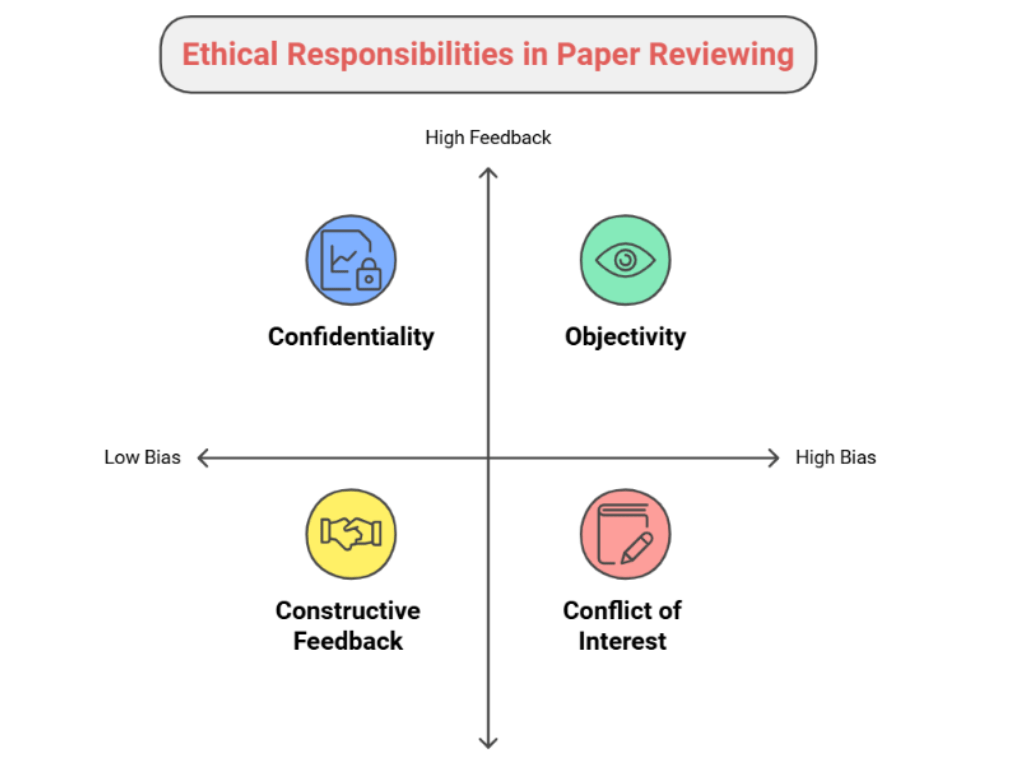
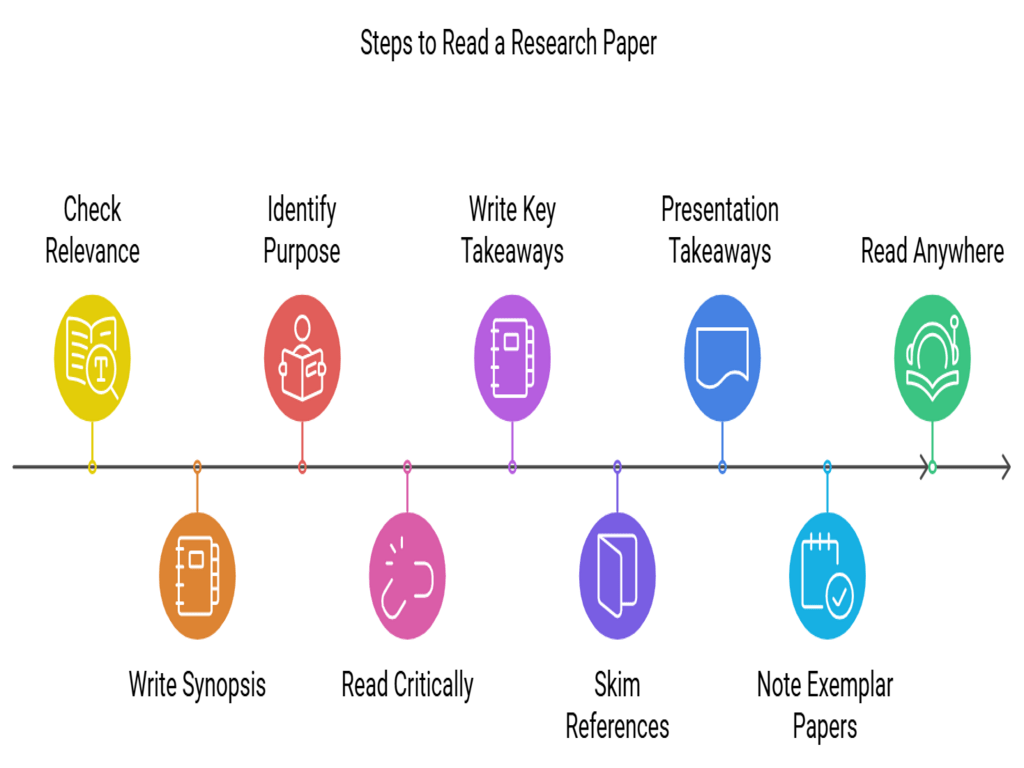
Dear Sir,
This is very informative and insightful.
Thank you very much for sharing.